 New Years in Japan is a special time. Unlike the West, where it is a fun party on the eve of the first, in Japan, the celebration is observed for several days, and rites and traditions can last the month of January. Visiting the local shrine or temple is a major event, known as hatsumode. One of the most visited temples is Todai-ji in Nara, which houses the world’s largest bronze Buddha. The figure is about 15m/50ft in height.
New Years in Japan is a special time. Unlike the West, where it is a fun party on the eve of the first, in Japan, the celebration is observed for several days, and rites and traditions can last the month of January. Visiting the local shrine or temple is a major event, known as hatsumode. One of the most visited temples is Todai-ji in Nara, which houses the world’s largest bronze Buddha. The figure is about 15m/50ft in height.
Category Archives: Japanese Religion
Maruhoyama Kofun and the Mozu Necropolis
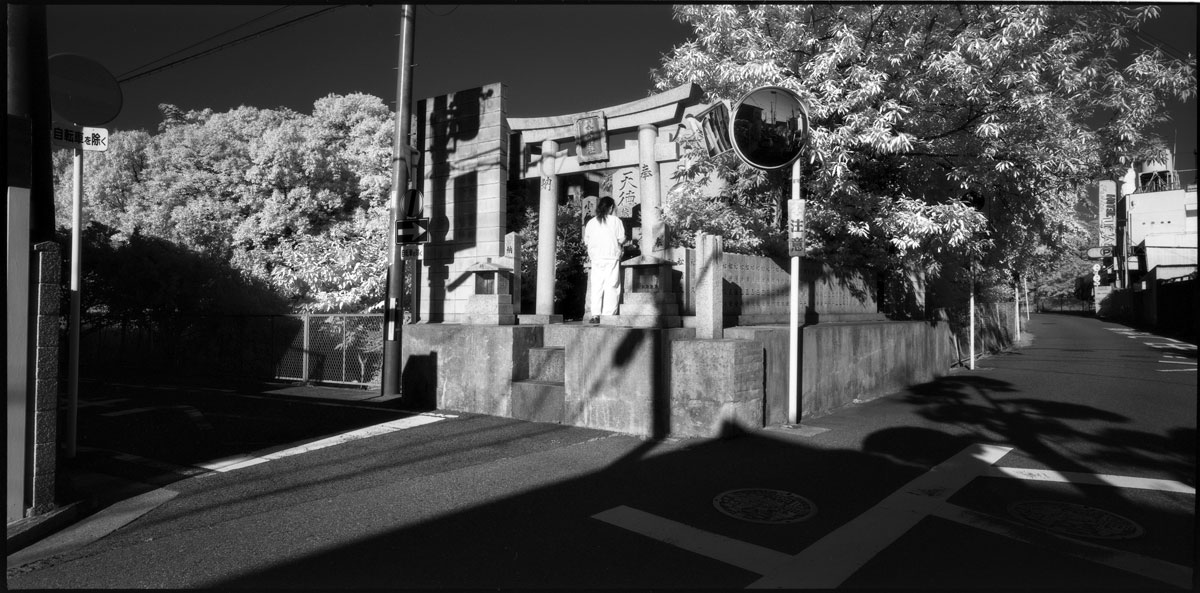 Hachijou shrine in front of Maruhoyama Kofun. Maruhoyama Kofun is also thought to be a satellite mound to Daisen Kofun. There is very little known about these sites nor the people that built them. Click on an image for a larger view.
Hachijou shrine in front of Maruhoyama Kofun. Maruhoyama Kofun is also thought to be a satellite mound to Daisen Kofun. There is very little known about these sites nor the people that built them. Click on an image for a larger view.
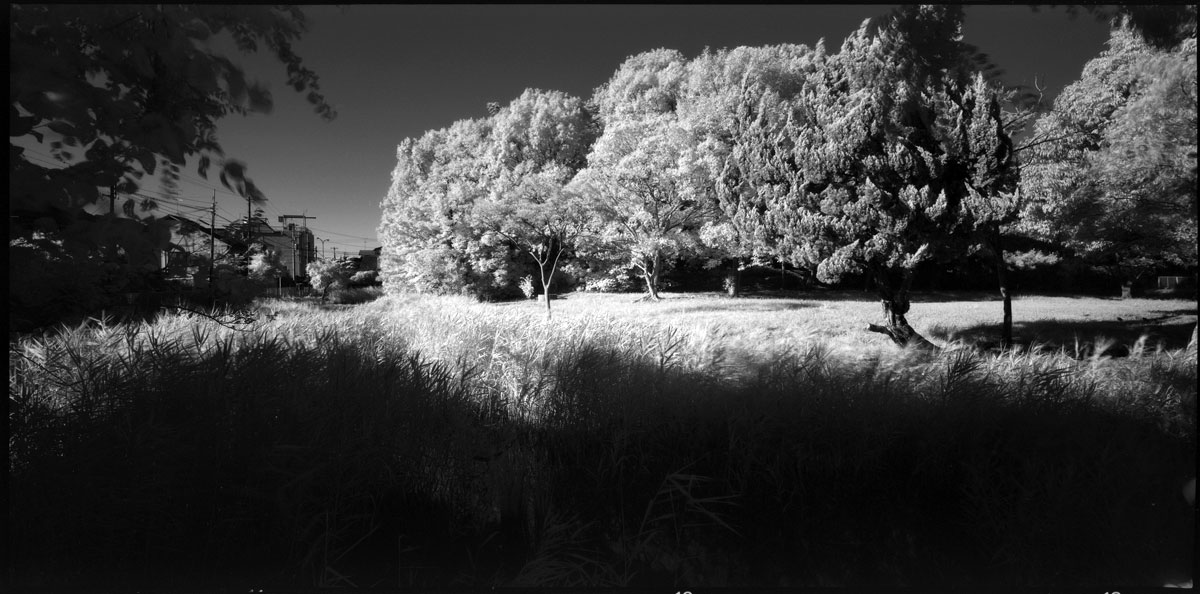
Nagayama Kofun and the Mozu Necropolis
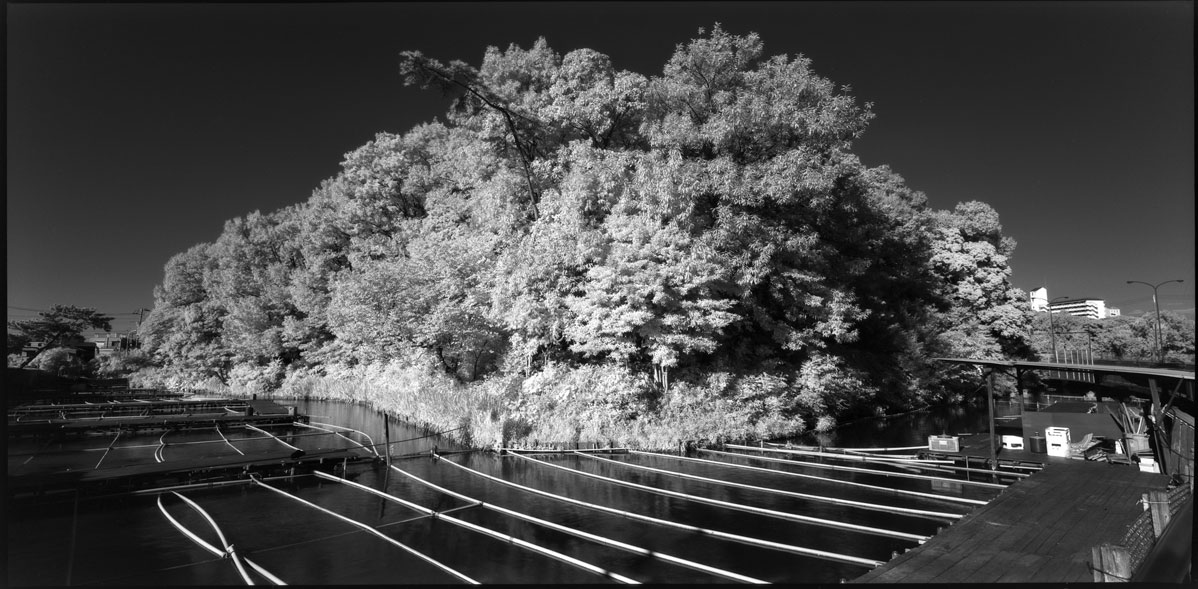
Nagayama Kofun is considered one of the satellite mounds of Daisen Kofun. Whether this was an individual grave site or a site for servants or retainers is unknown. The moat of Nagayama Kofun at one time had a rather mundane function—for 95 years, it was a popular fish farm were local sport fishermen came to relax. The farm was closed in 2011 after a long, and somewhat odd, legal battle with the city of Sakai. Click on the image for a larger view.
Chinaoka Kofun and the Mozu Necropolis
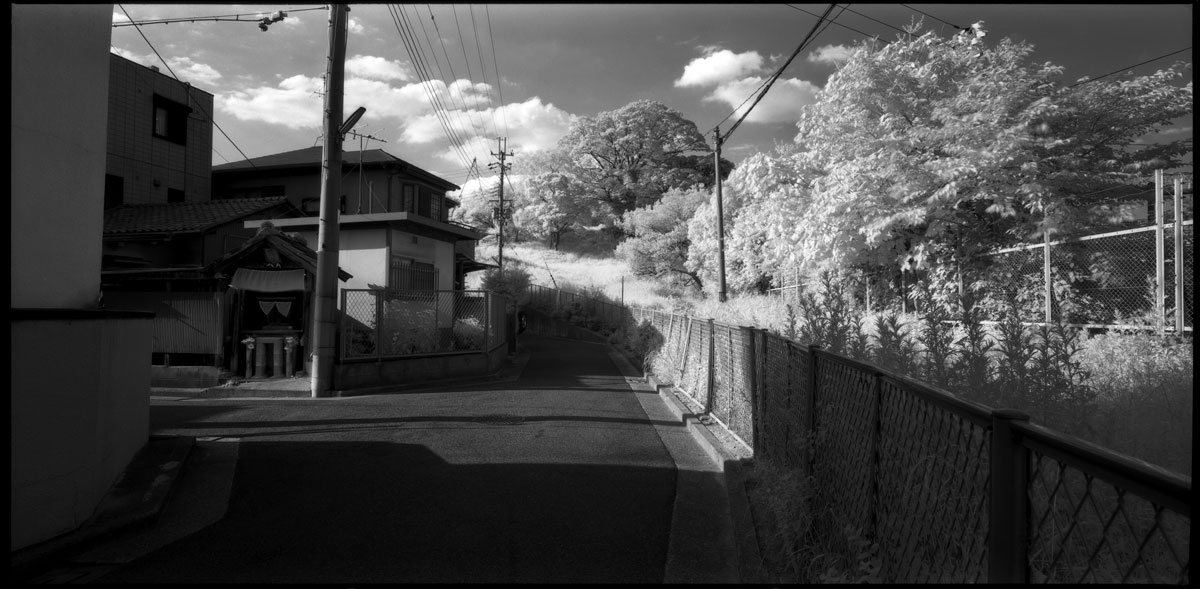 Chinaoka Kofun is the oldest of the Mozu Necropolis. While there are many spectacular Kofun in Sakai, of the known 107 historical sites, sixty one have been destroyed and many of the remaining forty six damaged. Only the tip and sliver of the main mound remains of Chinaoka Kofun, the rest destroyed by the encroaching neighborhood. A small shrine has been built next to the Kofun, which can be seen to the left of the electric pole in the image. Click on the image for a larger view.
Chinaoka Kofun is the oldest of the Mozu Necropolis. While there are many spectacular Kofun in Sakai, of the known 107 historical sites, sixty one have been destroyed and many of the remaining forty six damaged. Only the tip and sliver of the main mound remains of Chinaoka Kofun, the rest destroyed by the encroaching neighborhood. A small shrine has been built next to the Kofun, which can be seen to the left of the electric pole in the image. Click on the image for a larger view.
Jounoyama Kofun and the Mozu Necropolis
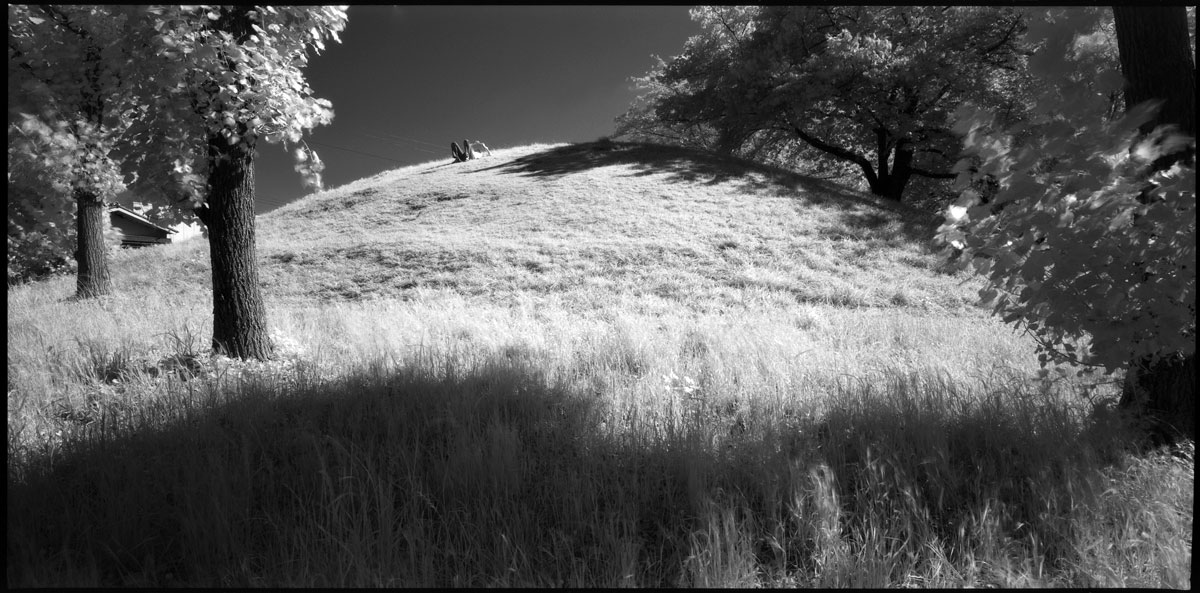
The Japanese had been building Kofun in this area for hundreds of years. The early graves were small mounds. Jounoyama Kofun, like many of the smaller mounds, is now a small neighborhood park. What treasures these burial sites may have contained are long since lost. Click on the image for a larger view.
Itasuke Kofun and the Mozu Necropolis
Today, the large Kofun are off limits to people, but they were, at one time, open. In 16th century Japan, Daisen Kofun would be visited for hanami, or cherry blossom viewing. Itasuke Kofun had a concrete bridge built to it made for a housing development; its remains are still visible. Opposition to the project prevented it.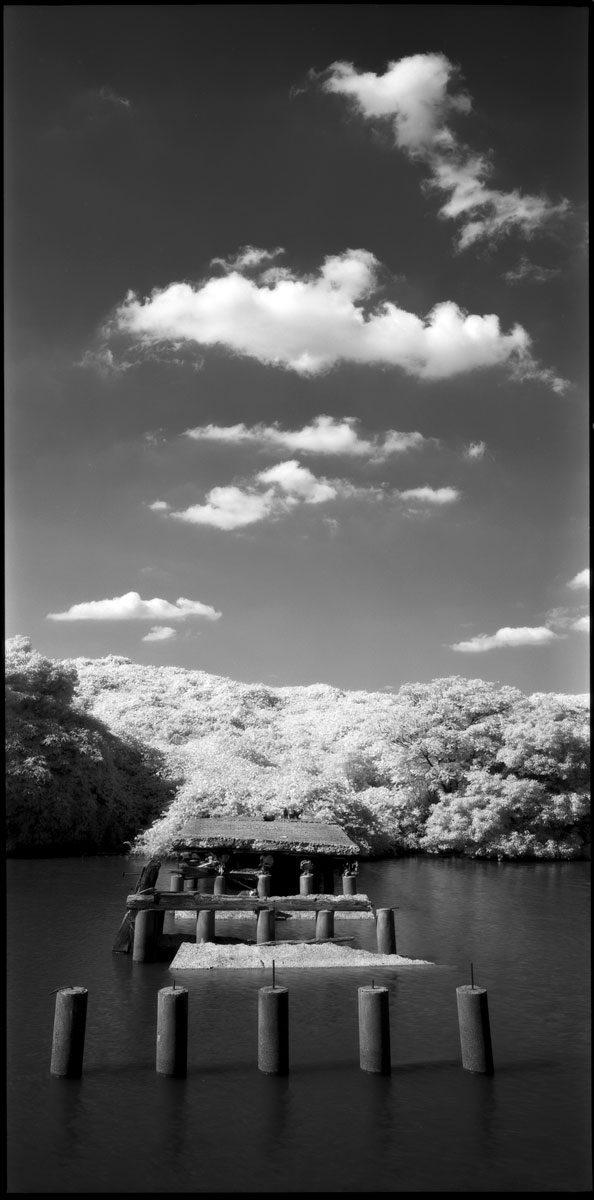 Sakai, like many cities in Japan, is a dense urban area. The Kofun act like wildlife sanctuaries. In winter, huge murders of crow can be seen gathering over these islands in the evening, and, in the summers, cicada electrify the air with their song. The moats are populated with fish and a host of water birds—heron, egrets, ducks, and divers.
Sakai, like many cities in Japan, is a dense urban area. The Kofun act like wildlife sanctuaries. In winter, huge murders of crow can be seen gathering over these islands in the evening, and, in the summers, cicada electrify the air with their song. The moats are populated with fish and a host of water birds—heron, egrets, ducks, and divers.
Itasuke Kofun has a population of tanuki, Japanese raccoon dogs. Locals come to the bridge and use sling shots to fire uncooked hotdogs to the animals. The tanuki are quite use to the game. If the trajectory of the sausage is way off, they sit calmly on the bridge and watch it disappear into the moat. Only when the shot is well aimed will the animals make the effort to catch the flying food. In the image, three tanuki are visible on the bridge trying to ascertain if this photographer is bringing lunch.
Gobyouyama Kofun and the Mozu Necropolis
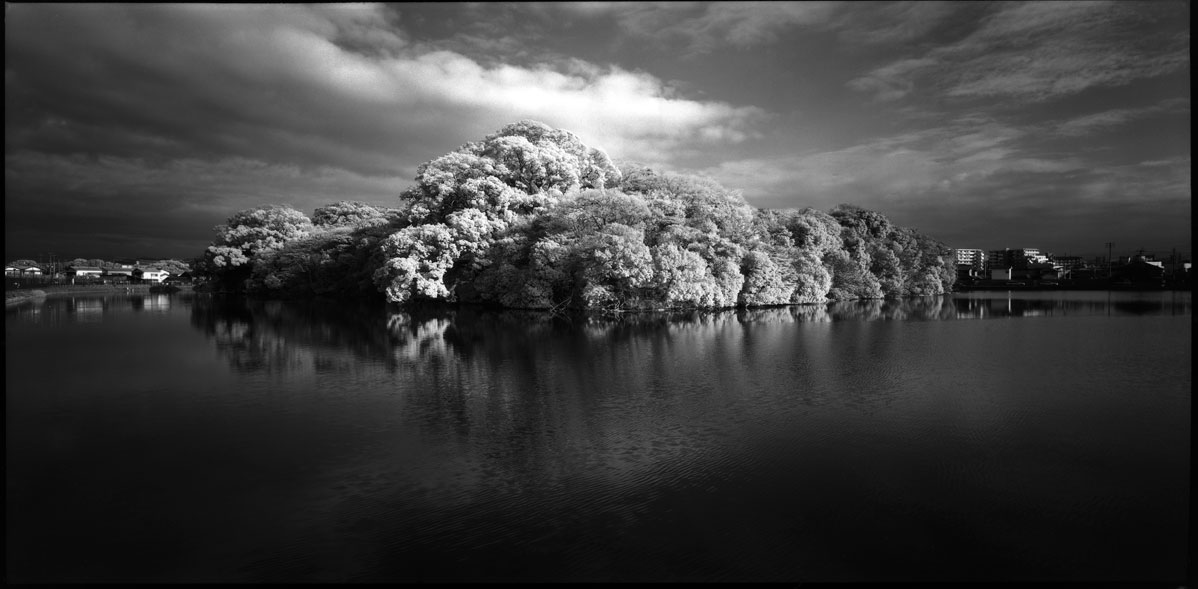 Gobyouyama Kofun shows the scale of the inner moat—many of the larger Kofun have lost their narrower outer moats. This grave site was once the okusha, or inner shrine sanctuary, for Mozu Hachiman Shrine.
Gobyouyama Kofun shows the scale of the inner moat—many of the larger Kofun have lost their narrower outer moats. This grave site was once the okusha, or inner shrine sanctuary, for Mozu Hachiman Shrine.
 The Kofun were originally bare, but the forests were allowed to grow in part to help preserve the earthworks from erosion. The forests can be spectacular in their own right.
The Kofun were originally bare, but the forests were allowed to grow in part to help preserve the earthworks from erosion. The forests can be spectacular in their own right.
Daisen Kofun and the Mozu Necropolis
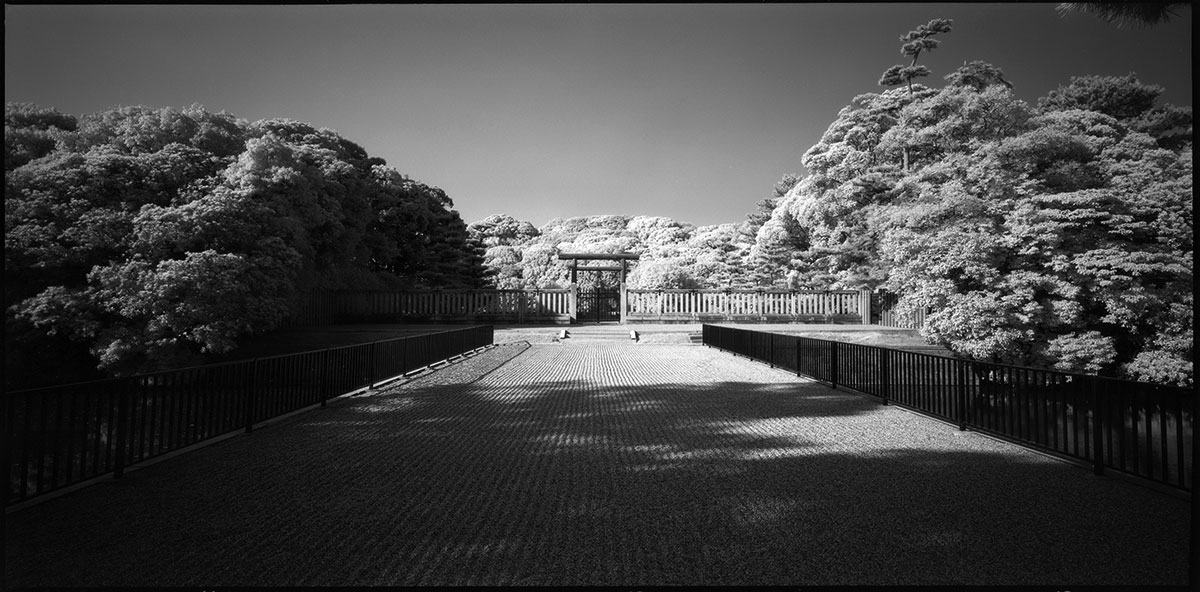 Between the 3rd and 6th centuries, the Japanese were making grave sites known as Kofun. Sakai, just south of Osaka, is home to forty six of these sites. The largest is Daisen Kofun, which is thought to be the resting place of emperor Nintoku. Covering about 80 acres, this keyhole shaped burial mound has three moats and twelve satellite mounds. The Kofun are the property of the Imperial Household Agency and entry is forbidden. This is as close as you can get to this massive structure, whose shape can only be perceived from the air.
Between the 3rd and 6th centuries, the Japanese were making grave sites known as Kofun. Sakai, just south of Osaka, is home to forty six of these sites. The largest is Daisen Kofun, which is thought to be the resting place of emperor Nintoku. Covering about 80 acres, this keyhole shaped burial mound has three moats and twelve satellite mounds. The Kofun are the property of the Imperial Household Agency and entry is forbidden. This is as close as you can get to this massive structure, whose shape can only be perceived from the air.
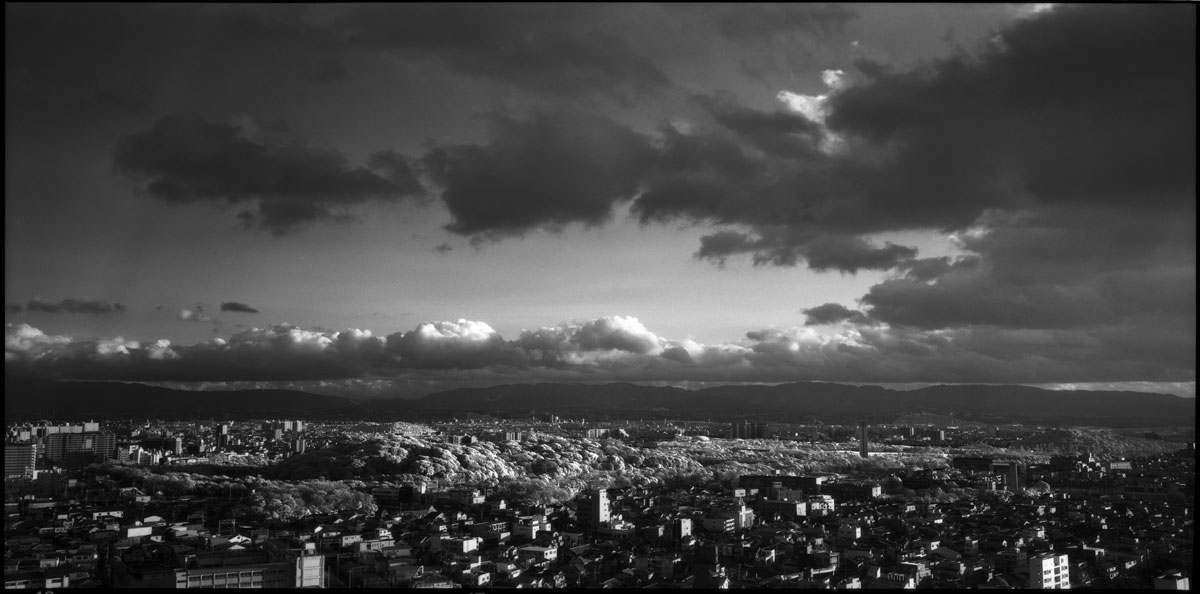 This site seems so removed from the modern Japanese city that surrounds it. But its presence is dominating. It is of this world, but clearly separate from it. Click on the images for a larger view.
This site seems so removed from the modern Japanese city that surrounds it. But its presence is dominating. It is of this world, but clearly separate from it. Click on the images for a larger view.
The Torii: a Sacred Gate
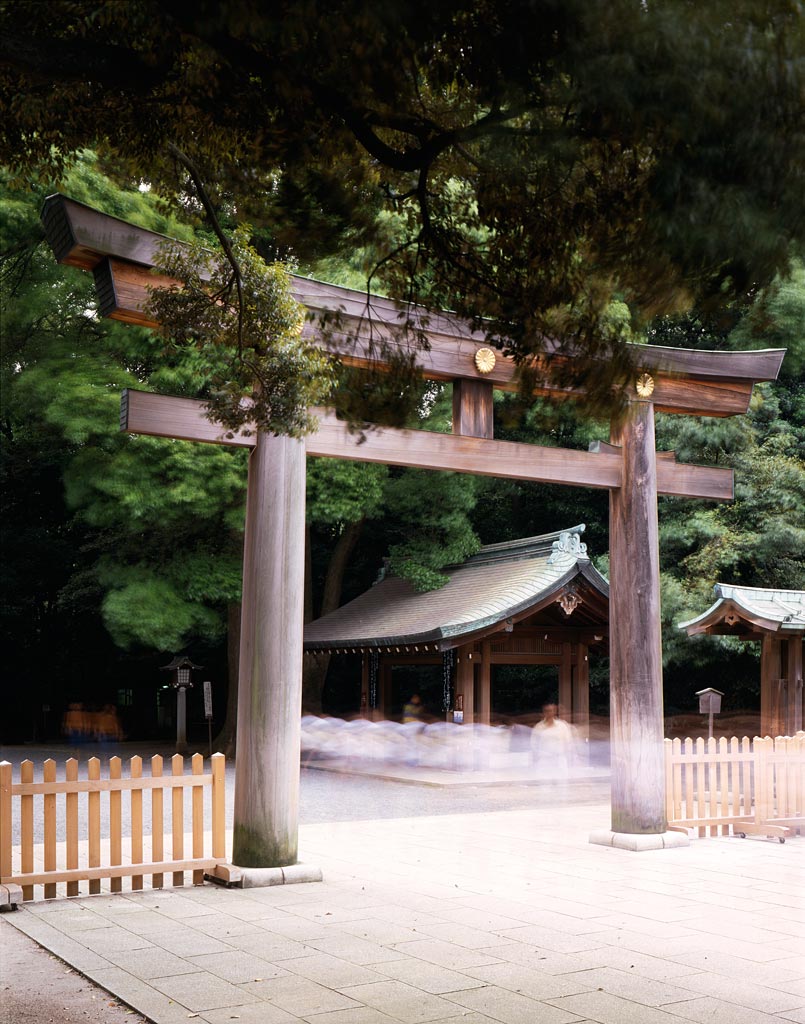 Most shines in Japan are marked by a gate called a torii. As the worshipper passes through the gate, it symbolized the transition from the mundane world into a sacred space. This gate is at Meiji Shrine, the largest shrine in Tokyo. The structure just beyond the gate is the ablution pavilion, or temizuya, where worshippers will rise their mouth and wash their hands as a purification rite.
Most shines in Japan are marked by a gate called a torii. As the worshipper passes through the gate, it symbolized the transition from the mundane world into a sacred space. This gate is at Meiji Shrine, the largest shrine in Tokyo. The structure just beyond the gate is the ablution pavilion, or temizuya, where worshippers will rise their mouth and wash their hands as a purification rite.

Sacred for a Day
 Shinto festivals are community rites. The god of the local shrine is transferred to a portable shrine, which is carried through the parish in an all-day event. Teams sing and dance while carrying their divine host. Along the way, these bearers stop for refreshment.
Shinto festivals are community rites. The god of the local shrine is transferred to a portable shrine, which is carried through the parish in an all-day event. Teams sing and dance while carrying their divine host. Along the way, these bearers stop for refreshment.
There are no sermons. This is no proselytizing. The revelation is far more subtle, far more profound. The place, the people are sacred for this day and for every day that follows. Click on the image for a larger view.
